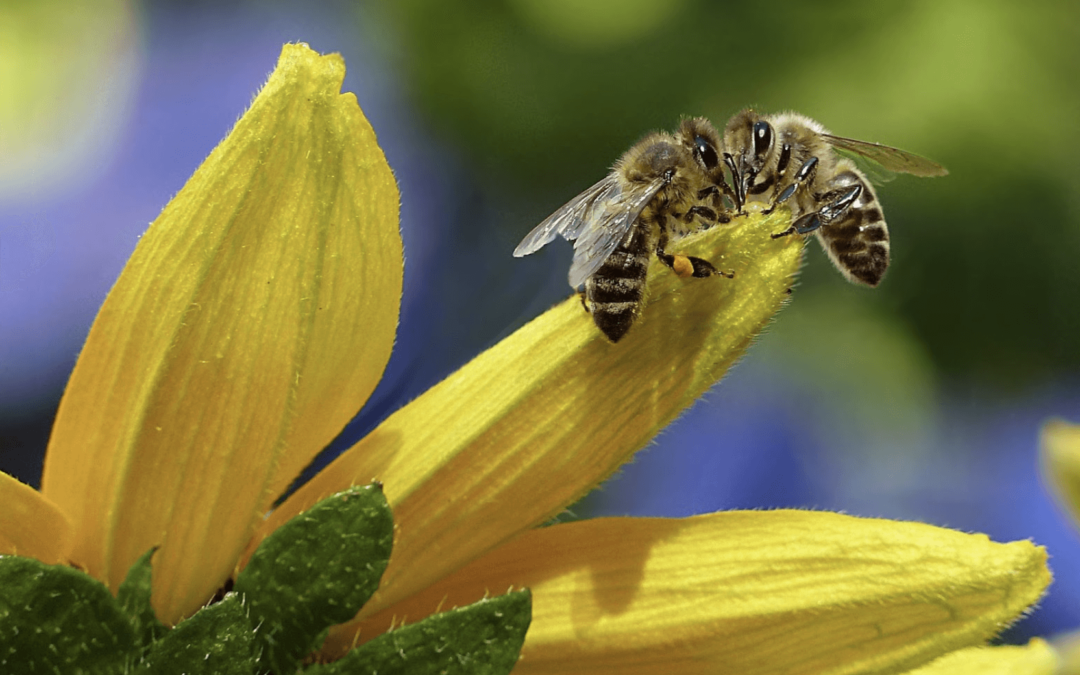As we escape the heatwave, you may be opting to spend more time outdoors. Picnics in the park, sprinklers in the grass and barbecues are staples of summertime fun. However, nothing can ruin a picnic like a bunch of bees swarming you and your food.
There are some friendly bees that you may encounter this summer. Honey bees use pollen and nectar from flowers to make honey and although they are generally docile, they can attack when they feel as though their hive is being threatened. When a honey bee stings, however, the stinger is left in your skin and ripped from their body, causing their death. The best advice is to respect the honey bee’s job and mind your own business, they are friendly and helpful creatures.
Bumble bees may look daunting through their fuzzy exterior, but they are similar to the Honey bee in that they only attack when they feel their colony is threatened. Bumble bees can sting over and over again, however, so colonies are best when left to the professionals.
Sweat bees are solitary ground-nesters with metallic coloring. They are not aggressive and are attracted to human perspiration, so they may sting you if they were to get brushed off the skin. To reduce the area where sweat bees may nest, try to eliminate bare patches of soil in your yard.
Mason bees are very similar to Honey bees, just much more efficient. These bees are tolerant of cooler temperatures, so you may not see as many of them this summer. The males do not have a stinger and the female will only sting if she is trapped or squeezed, so mason bees pose very little threat.
There are many different types of wasps in Oregon that you should look out for. Yellowjackets are one of the most dangerous wasps and they construct large, paperlike nests that are easy to rile by passing humans. New queens are produced within the colony late in the summer, so the demand for sugars sends yellowjackets to harass barbecues, picnics and more. Cover any food and drink when eating outside and clean up food waste immediately after you finish eating.
Mud Daubers buzz around small bodies of water to collect mud for their nests. While the chance to get stung by one is lower, they still can be frightening and a nuisance due to the fact they often construct nests over doorways or around picnic areas.
Carpenter bees are big, black and have a shiny abdomen, opposed to the Bumble bee who has a hairy one. They bore a new hole in the side of their homes every year to lay eggs. Male carpenter bees are aggressive, however they do not have a stinger so they cannot do much. The females can sting when provoked.
Arguably the most dangerous out of them all is the Hornet. They can shoot their venom as well as sting, and they can be relentless when angered. Their nests are often the size of a soccer ball and found hanging in a tree or bush. If you find a Hornets nest, leave it alone and call a professional for help.
It’s important to get checked if you are allergic to bees. If you begin to experience adverse effects after a bee sting, seek medical attention immediately. Anaphylaxis is a common reaction of those severely allergic to bees and needs to be treated by medical personnel right away.
Dressing in bright or floral patterns and wearing overtly fragrant perfumes or lotions might make a bee mistake you for a flower, so try to avoid doing so when spending time outside. Usually with bees if you don’t bother them, they won’t bother you. However, when you go outside you are entering their territory, so it’s important to respect them and the important jobs they do.
Bees are endangered, and while they can be a nuisance, they are important and essential for our ecosystem. You can help save the bees by planting more pollinator-friendly plants, stop the use of bee-killing pesticides and promote sustainable, less pesticide-reliant agricultural practices.

